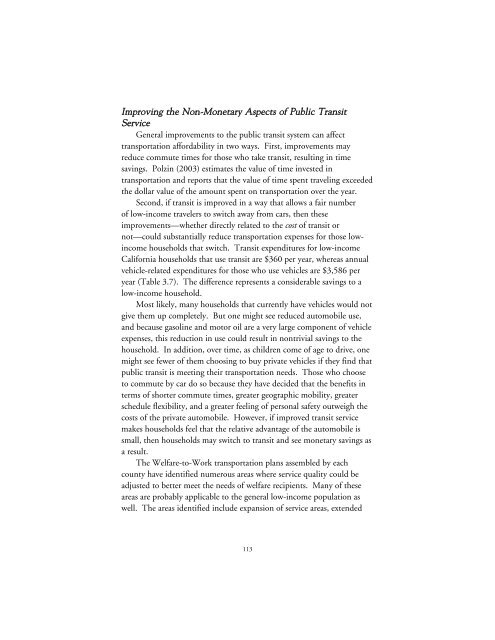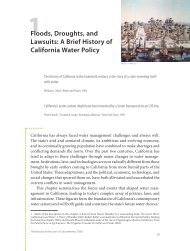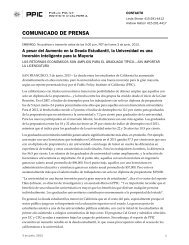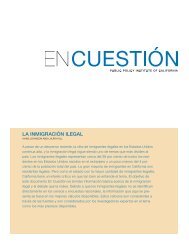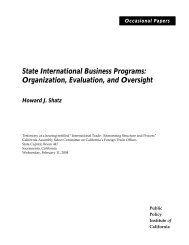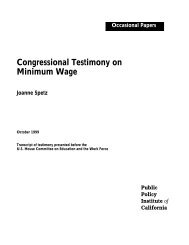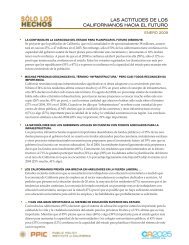Transportation Spending by Low-Income California Households ...
Transportation Spending by Low-Income California Households ...
Transportation Spending by Low-Income California Households ...
Create successful ePaper yourself
Turn your PDF publications into a flip-book with our unique Google optimized e-Paper software.
Improving the Non-Monetary Aspects of Public Transit<br />
Service<br />
General improvements to the public transit system can affect<br />
transportation affordability in two ways. First, improvements may<br />
reduce commute times for those who take transit, resulting in time<br />
savings. Polzin (2003) estimates the value of time invested in<br />
transportation and reports that the value of time spent traveling exceeded<br />
the dollar value of the amount spent on transportation over the year.<br />
Second, if transit is improved in a way that allows a fair number<br />
of low-income travelers to switch away from cars, then these<br />
improvements—whether directly related to the cost of transit or<br />
not—could substantially reduce transportation expenses for those lowincome<br />
households that switch. Transit expenditures for low-income<br />
<strong>California</strong> households that use transit are $360 per year, whereas annual<br />
vehicle-related expenditures for those who use vehicles are $3,586 per<br />
year (Table 3.7). The difference represents a considerable savings to a<br />
low-income household.<br />
Most likely, many households that currently have vehicles would not<br />
give them up completely. But one might see reduced automobile use,<br />
and because gasoline and motor oil are a very large component of vehicle<br />
expenses, this reduction in use could result in nontrivial savings to the<br />
household. In addition, over time, as children come of age to drive, one<br />
might see fewer of them choosing to buy private vehicles if they find that<br />
public transit is meeting their transportation needs. Those who choose<br />
to commute <strong>by</strong> car do so because they have decided that the benefits in<br />
terms of shorter commute times, greater geographic mobility, greater<br />
schedule flexibility, and a greater feeling of personal safety outweigh the<br />
costs of the private automobile. However, if improved transit service<br />
makes households feel that the relative advantage of the automobile is<br />
small, then households may switch to transit and see monetary savings as<br />
a result.<br />
The Welfare-to-Work transportation plans assembled <strong>by</strong> each<br />
county have identified numerous areas where service quality could be<br />
adjusted to better meet the needs of welfare recipients. Many of these<br />
areas are probably applicable to the general low-income population as<br />
well. The areas identified include expansion of service areas, extended<br />
113


